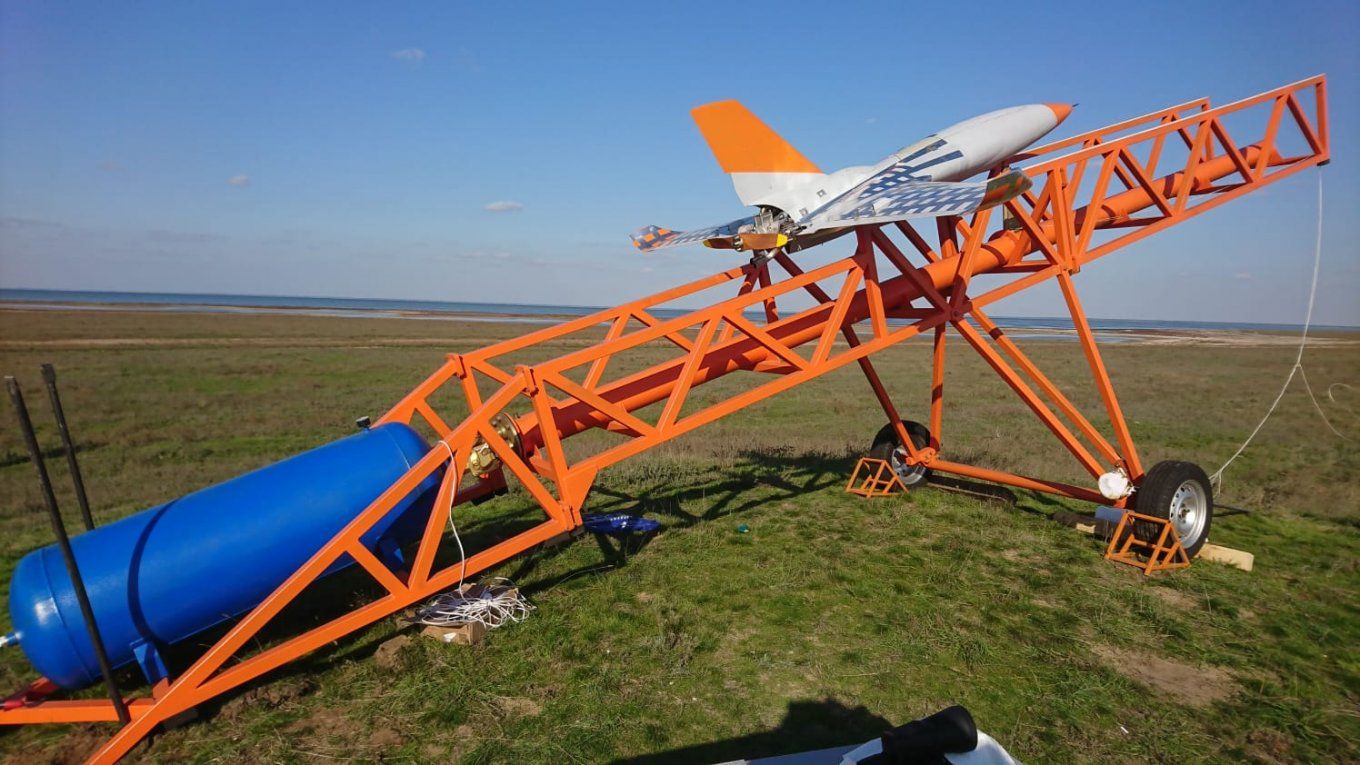A Russian A-50 early warning and control aircraft was damaged in Belarus due to a possible drone strike at the Machulishchy airfield near Minsk.
Earlier, videos of under-development Ukrainian drones had emerged on social media, with some military bloggers claiming it will see action against Russia very soon.
Primarily a kamikaze drone (suicide drone or loitering munition) and a pilotless target vehicle, it resembles an imitation of the well-known Iranian Arash-2 unmanned aerial vehicle (UAV).
However, based open-source information on earlier efforts by Ukrainian domestic industry suggests it is based on the RZ60 unmanned target developed several years ago by the Ukrainian company PJSC Ramsay (Kyiv).
According to some military bloggers on Telegram groups, it was tested by the Ministry of Defense of Ukraine in 2019. Information about its current status – prototype testing phase or serial production – could not be independently verified.
Video Shows New Multipurpose Drone
The YouTube video posted by the Channel AntiVata TV showed its test launch, saying it was “the first video of the successful launch of the Ukrainian kamikaze UAV.” The channel attributed the original video to a senior researcher and faculty from the Taras Shevchenko Kyiv National University chemistry department.

The short 11-second video shows the drone-mounted on rail launchers on the back of a simple pickup van. A pusher-propeller is seen rotating at the tail-end when a rocket booster propels it from the launcher.
An internet search with the drone’s name led to a brochure that featured five versions of the RZ60 meant for combat (presumably kamikaze or weapons delivery) and mock targets.
However, the source website could not be accessed. All designs looked strikingly similar to the drone in the video. Two of the five are driven by propellers, and the three have air-breathing jet engines.
Similar Drone In Video & Brochure
The brochure belonged to the National Aerospace University/Kharkiv Aviation Institute (XAI), where curiously, a search on the XAI’s website yielded invalid results. The discrepancy between a brochure being available with the developer’s name and the website revealing no information remains a mystery.
Therefore, Ukraine is presumed to resume the stalled project in 2019. While the date of the test in the video is not known, it must have been conducted only recently during the winter months, guessing from the snow seen in the background.
The development, nevertheless, must have been hit during Russia’s targeted strikes on Ukraine’s defense industry, which were carried out even on the hastily set up arms manufacturing units in the middle of the war.
Russian observers have long pointed out how Ukraine has primarily become a mere assembly hub of various Western components and has been nearly permanently derailed from carrying out complex defense research and development projects.
Of the five drones in the brochure, the drone in the video resembles the first one. It has been classified as a ‘combat UAV’ and designated the UAV RZ60. In what appears to be similar to the Iranian Shahed series of drones and their Russian iterations, the Geraniums, the drone has an exposed engine.
It has been described as a gasoline two-stroke, internal combustion power plant. It can reach speeds between 130 to 290 kilometers per hour, an altitude of 50 to 6000 meters, an endurance of one hour, a tactical range of 40 kilometers, and a practical range of 300 kilometers.
The two different ranges can be assumed to be with or without payload. The shape of the wing, fuselage, and even details like wingtips, and bulges at the base of the vertical stabilizer of the drone in the video and the brochure match significantly.
The performance characteristics are for a short-range tactical UAV and do not match the nearly 2000 kilometers-plus reach of the Geraniums. Ukraine, therefore still does not possess the capability to undertake consistent long-range deep penetration strikes beyond its border into Russia.
The attacks with the Tu-141 Strizh jets were one-off partial successes. They needed a lot of supporting infrastructure, like targeting data from US and NATO aircraft and on-ground human intelligence (HUMINT).
- The author can be reached at satamp@gmail.com
- Follow EurAsian Times on Google News